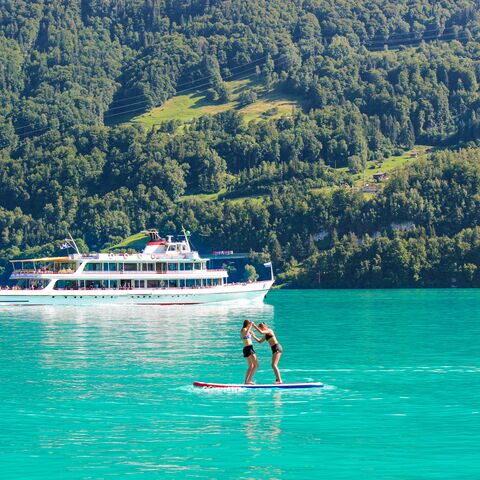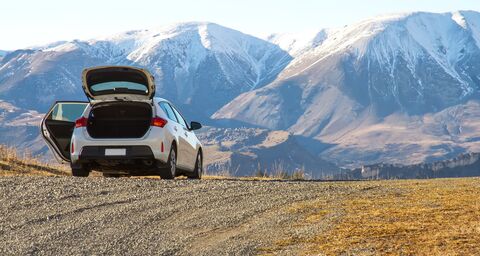
There are no rules on the water! Or are there?
Whether you’re a fan of motorboats, stand-up paddleboards or kitesurfing, Switzerland’s lakes and rivers are perfect for watersports. What many people don’t know, however, is that rules apply to everyone using the waterways, not just those with motorboats.
Maybe you enjoy sitting in your rubber dinghy on a sunny weekend and just letting the river carry you along. Maybe you prefer gliding elegantly across the calm waters of a lake on your stand-up paddleboard. Whichever you choose, rules are probably the last thing you’ll be thinking about. Many people think they don’t matter because they can’t imagine anything bad happening at such slow speeds. Life preservers are all well and good, but they only make sense on a motorboat, and the people with boats are the only ones who have to worry about when to yield and other such rules. Right?
The five golden rules of Swiss waterways
No matter whether you’re sailing, rowing or kitesurfing, you need to know these five rules:
Rule 1: A boat doesn’t handle like a car – allow for inertia.
Boats, both large and small, don’t have brakes. At most, they can engage reverse. A boat doesn’t turn as quickly as you might be used to with cars. To make things even more difficult, currents and waves cause the surface you’re moving across to move as well. You need to think ahead before starting any maneuvers, and that applies especially to rubber dinghies on rivers.
Rule 2: Obey right-of-way rules on the water.
It may sound strange, but there are rules on yielding on the water too, and they apply to stand-up paddleboards, sailboats, etc. as well as motorboats. In principle, the more maneuverable craft has to yield. That means that you have to yield to sailboats if you’re in a motorboat. When you come up against a craft of the same category, you have to yield to the right, i.e. the craft coming from the right goes first. When two craft of the same category approach each other head-on, they must both move to the starboard (right) side to give each other room.
Important for stand-up paddleboards (SUPs)
You can basically go anywhere you’d like on lakes in Switzerland on a stand-up paddleboard. But if you are more than 300 meters from the shore, you must have a life jacket with you that complies with SN EN ISO 12402-5:2006. You should also check the local regulations because this may vary from canton to canton.

An everyday scene on Lake Lucerne. Does the sailboat have to yield to the tourist boat? Take the test at the end of this blog.
Rule 3: Waterways are unpredictable.
Waterways can have varying depths, currents, waves, and hidden obstacles. Try to stay alert on the water and anticipate potential dangers.
Rule 4: Check the weather report.
Strong winds, fog or violent storms can quickly ruin a nice trip out on the water. It’s always wise to check the weather forecast carefully first.
Rule 5: Life preservers do exactly what the name suggests.
Make sure you’re wearing the right safety gear or at least have it on board – especially a life preserver. It might not be a fashion statement, but it could save your life, and that’s what counts! Children under 12 must wear a life preserver on any kind of boat. Adults must also carry one if they are more than 300 meters from the shore, even on rowboats, stand-up paddleboards, and kitesurfers.
Take the test: who goes first?
Are you a fully-fledged expert on the rules of the waterways? Prove your credentials by arranging these watercraft in order of priority:
- A) Fishing boat (with yellow ball)
- B) Sailboat
- C) Rowboat or stand-up paddleboard (human-powered)
- D) Commercial barge
- E) Ferry or other public transport craft
- F) Motorboat (private)
- G) Windsurfer or kitesurfer





